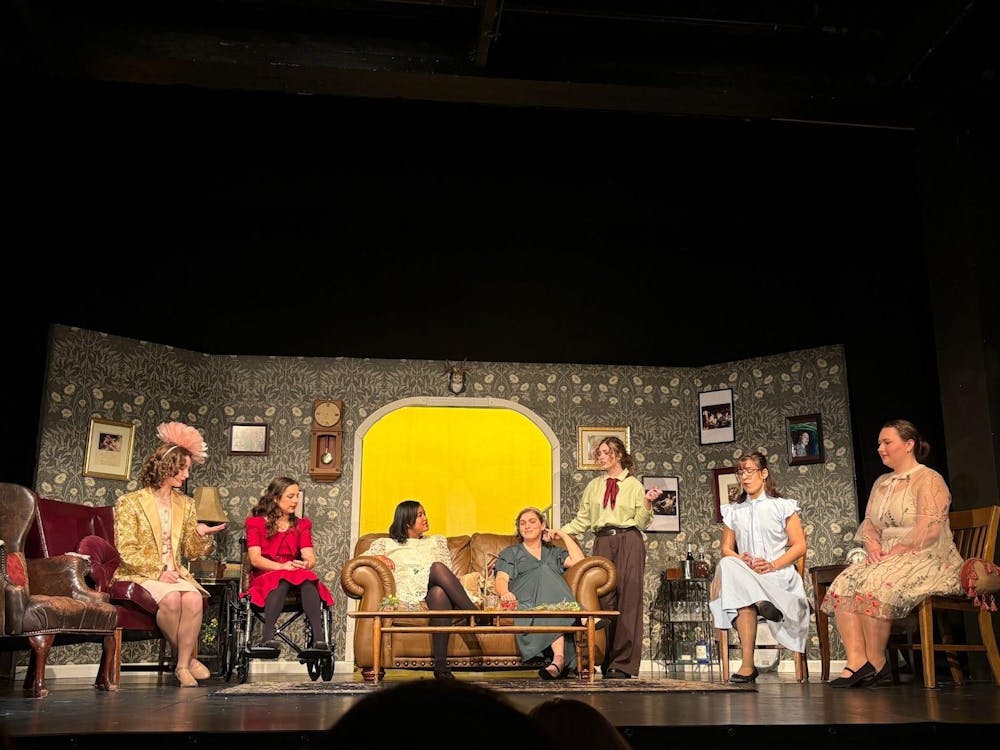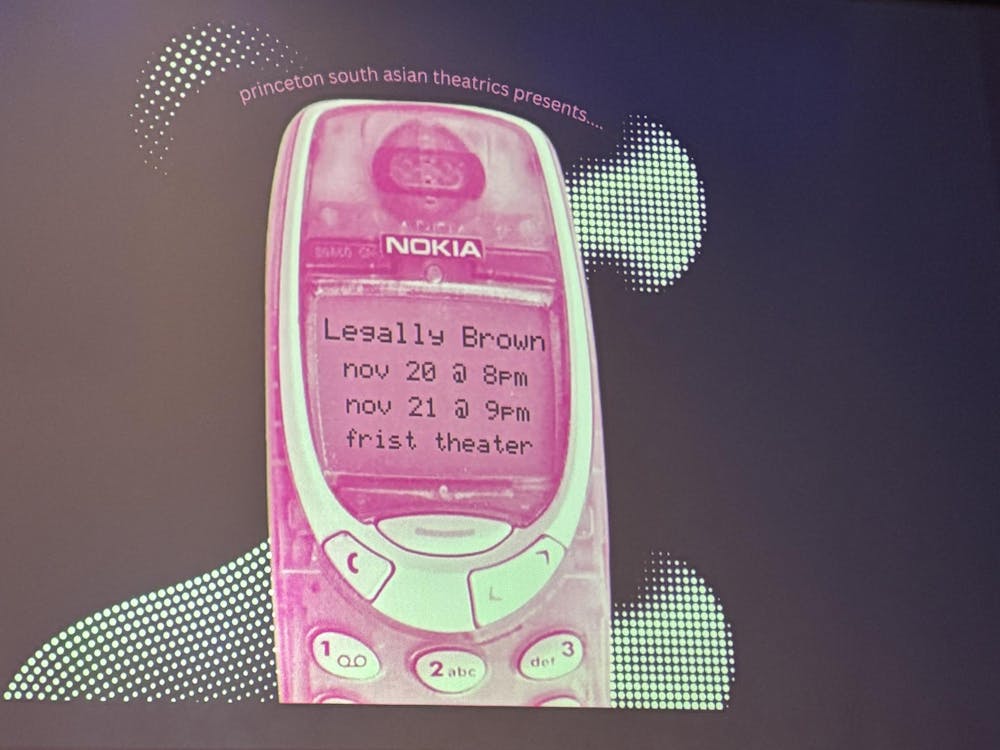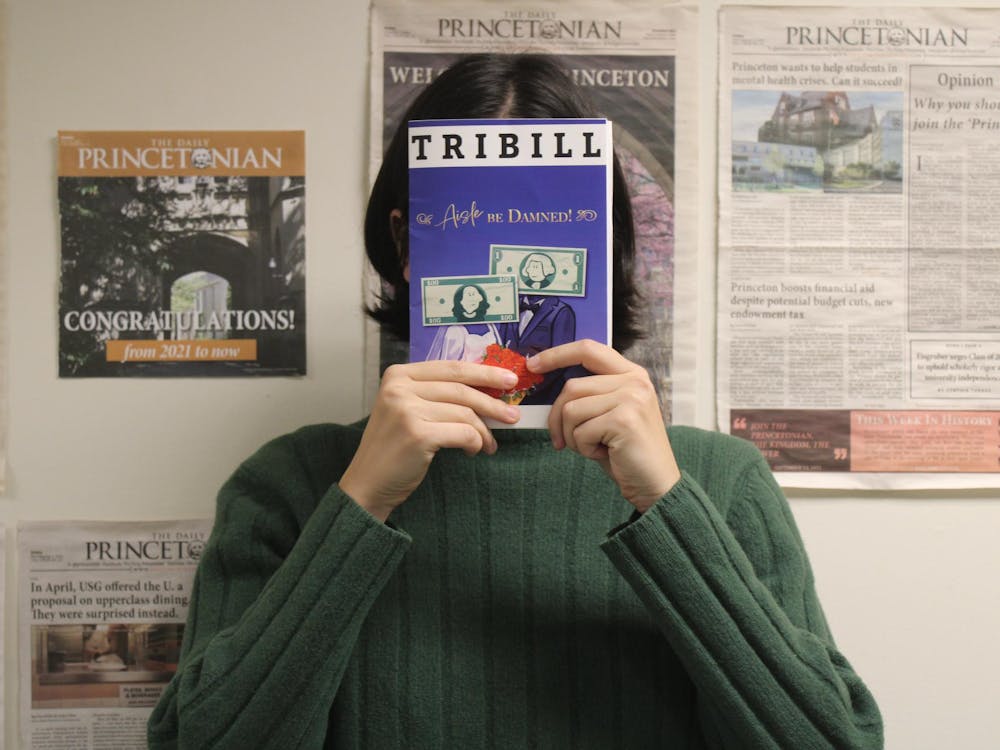“We’re all one,” boasts the howling Woof (Dylan Blau Edelstein ’17) at the top of PUP’s colorful production of “Hair,” directed by Cat Andre ’17. Following a tribe of friends through sexual revolution, drug experimentation and dissatisfaction with the status quo, this rock musical is hardly a “safe” choice of production. With a script notorious for its lack of character arcs and its absurdity throughout, all too often “Hair” falls from a united piece of social commentary to a disjointed, drug-induced musical revue. While keeping all the moving parts of “Hair”straight is quite a challenge, it is a challenge that, with a few exceptions, PUP’s productionovercomes.
One of the strongest components of the production is its vibrant set design (Miles Carey ’18). Myriad rugs cover the stage and a clothesline of draped clothes forms a patchwork background. The cloth at center stage is a bohemian sun tapestry, symbolic of the astrological and spiritual movements that brought life and meaning to the time. Ensemble members adjust and add to the clothesline throughout the production, effectively transforming the theater from a blank stage to an intimate space. Hardly a traditional proscenium, the Class of 1970 Theatrein Whitman Collegeprovides a unique opportunity as a three-sided black box. Floral garlands extend from the stage onto the railings and into the audience, effectively encouraging the audience to become “one” with the tribe.
Claude (Allen Hernandez ’16) drives a compelling narrative, wrestling through his personal dilemma with vocal strength and lucid characterization. Jeanie (Cameron Platt ’16) is a standout performance; with a voice suited to the score, she brings energy and talent to the ensemble. Similarly, Sheila (Melanie Berman ’18) seems at ease with her character, using moments in the background to develop her relationships. Most outstanding are the unforgettable performances of Margaret Mead (Ryan Gedrich ’16) and Hubert (Andy Hunt ’17); their perfectly timed comedic relief and effortless dialogue make the moment dynamite.
Unfortunately, some of the most promising talent on stage is underused in the production. Allison Light ’18 lights up the stage, Abby Jean-Baptiste ’18 brings a commanding and skilled presence and Kat Giordano ’18 carries outstanding vocals; however, in “Hair”these actors are hardly adequately featured. Luckily for the Princeton theater community, they will have many more opportunities to take the stage.
Besides the set design, the other technical components of “Hair” are a mixed bag. The onstage band is remarkable, notable for their era costumes and wigs, pre-show warm-up and the vocal solo of the guitarist (Lachlan Kermode ’17). The costumes (Margaret Wright ’17) appropriately depict the counter-cultural movement without relying on flower-power stereotypes.
While the light design (Marc Decitre ’17) sufficiently operates within the confines of the grid at the Class of 1970 Theatre, the often poorly timed cues detract from the immersive experience of the production. Overuse of strobe lights, coupled with overpowering sound effects, indicates that, though often with good intentions, the multimedia component of “Hair” needs a bit of refining.
The direction of the production — naturally challenging — is perhaps the most polemical aspect of the production.
Numerous moments are brilliantly directed (Cat Andre ’17) and choreographed (Adin Walker ’16 and Selah Hampton ’17). The clever use of space and motion involves full exploration of the theater, aisles and all. Compelling stage pictures align with strong vocals at parts, as in the dance sequence at the top of the titular song, in which ensemble members move as one in a multi-level embrace, mirroring the sun tapestry found just behind the actors.

Other moments of inspired movement include the scene in which three pairs of parents chastise Claude for his shenanigans, the hallucination sequence (an update of the infamous musical theatre dream sequence) and the final combat scene, which is cinematographic in its innovative use of repetition — clearly the shining jewel of the production.
However, some songs are disjointed, often because of too many moving parts detracting from the unity of the story and the ensemble. The opening number “Aquarius,” with patchy vocals and unwarranted choreography, is underwhelming. The space often works against the production; at points the ensemble bunches together during group numbers, overuses the space behind the audience and relies on clichéd choreography. And although moments of angst and anger often seem abrupt, all in all the production brings a breath of life to a story all too often seen as merely a medium for a musical revue.
Though hardly a perfect production, PUP’s “Hair” transforms the challenging score and script into a living, breathing, cohesive production, boasting many moments of remarkable direction and unity.
Princeton University Player’s production of “Hair” will play in the Class of 1970 Theatre in Whitman College Feb. 26-28.

PROS: standout performances, innovative choreography and movement
CONS: spotty vocals, occasional confused direction, poorly timed technical cues
3.5 out of 5 paws







